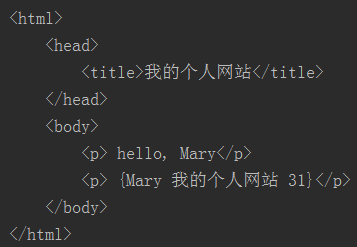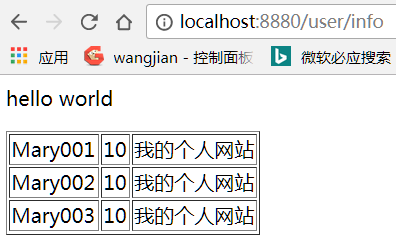go http
go http编程
- Go原生支持http,import(“net/http”)
- Go的http服务性能和nginx比较接近
- 几行代码就可以实现一个web服务
1、http server
package main
import (
"fmt"
"net/http"
)
func Hello(w http.ResponseWriter, r *http.Request) {
fmt.Println("handle hello")
fmt.Fprintf(w, "hello ")
}
func login(w http.ResponseWriter, r *http.Request) {
fmt.Println("handle login")
fmt.Fprintf(w, "login ")
}
func history(w http.ResponseWriter, r *http.Request) {
fmt.Println("handle history")
fmt.Fprintf(w, "history ")
}
func main() {
http.HandleFunc("/", Hello)
http.HandleFunc("/user/login", login)
http.HandleFunc("/user/history", history)
err := http.ListenAndServe("0.0.0.0:8880", nil)
if err != nil {
fmt.Println("http listen failed")
}
}
2、http client
package main
import (
"fmt"
"io/ioutil"
"net/http"
)
func main() {
res, err := http.Get("https://www.baidu.com/")
if err != nil {
fmt.Println("get err:", err)
return
}
data, err := ioutil.ReadAll(res.Body)
if err != nil {
fmt.Println("get data err:", err)
return
}
fmt.Println(string(data))
}
3、http常见请求方法
- Get请求
- Post请求
- Put请求
- Delete请求
- Head请求
4、http head
package main
import (
"fmt"
"net/http"
)
var url = []string{
"http://www.baidu.com",
"http://google.com",
"http://taobao.com",
}
func main() {
for _, v := range url {
resp, err := http.Head(v)
if err != nil {
fmt.Printf("head %s failed, err:%v\n", v, err)
continue
}
fmt.Printf("head succ, status:%v\n", resp.Status)
}
}
- 超时控制
package main
import (
"fmt"
"net/http"
"net"
"time"
)
var url = []string{
"http://www.baidu.com",
"http://google.com",
"http://taobao.com",
}
func main() {
for _, v := range url {
c := http.Client{
Transport: &http.Transport {
Dial:func(network, addr string) (net.Conn, error){
timeout := time.Second*2
return net.DialTimeout(network, addr, timeout)
},
},
}
resp, err := c.Head(v)
if err != nil {
fmt.Printf("head %s failed, err:%v\n", v, err)
continue
}
fmt.Printf("head succ, status:%v\n", resp.Status)
}
}
5、http 表单处理
package main
import (
"io"
"net/http"
)
const form = `<html><body><form action="#" method="post" name="bar">
<input type="text" name="in"/>
<input type="text" name="in"/>
<input type="submit" value="Submit"/>
</form></html></body>`
func SimpleServer(w http.ResponseWriter, request *http.Request) {
io.WriteString(w, "<h1>hello, world</h1>")
}
func FormServer(w http.ResponseWriter, request *http.Request) {
w.Header().Set("Content-Type", "text/html")
switch request.Method {
case "GET":
io.WriteString(w, form)
case "POST":
request.ParseForm()
io.WriteString(w, request.Form["in"][0])
io.WriteString(w, "\n")
io.WriteString(w, request.FormValue("in"))
}
}
func main() {
http.HandleFunc("/test1", SimpleServer)
http.HandleFunc("/test2", FormServer)
if err := http.ListenAndServe(":8088", nil); err != nil {
}
}
6、panic处理
package main
import (
"io"
"log"
"net/http"
)
const form = `<html><body><form action="#" method="post" name="bar">
<input type="text" name="in"/>
<input type="text" name="in"/>
<input type="submit" value="Submit"/>
</form></body></html>`
func SimpleServer(w http.ResponseWriter, request *http.Request) {
io.WriteString(w, "hello, world")
panic("test test")
}
func FormServer(w http.ResponseWriter, request *http.Request) {
w.Header().Set("Content-Type", "text/html")
switch request.Method {
case "GET":
io.WriteString(w, form)
case "POST":
request.ParseForm()
io.WriteString(w, request.Form["in"][1])
io.WriteString(w, "\n")
io.WriteString(w, request.FormValue("in"))
}
}
func main() {
http.HandleFunc("/test1", logPanics(SimpleServer))
http.HandleFunc("/test2", logPanics(FormServer))
if err := http.ListenAndServe(":8088", nil); err != nil {
}
}
func logPanics(handle http.HandlerFunc) http.HandlerFunc {
return func(writer http.ResponseWriter, request *http.Request) {
defer func() {
if x := recover(); x != nil {
log.Printf("[%v] caught panic: %v", request.RemoteAddr, x)
}
}()
handle(writer, request)
}
}
http 模板
1、替换
main.go
package main
import (
"fmt"
"os"
"text/template"
)
type Person struct {
Name string
Title string
age string
}
func main() {
t, err := template.ParseFiles("e:/wangjian/go/project/src/go_dev/day10/template/index.html")
if err != nil {
fmt.Println("parse file err:", err)
return
}
p := Person{Name: "Mary", age: "31", Title: "我的个人网站"}
if err := t.Execute(os.Stdout, p); err != nil {
fmt.Println("There was an error:", err.Error())
}
}
index.html
<html>
<head>
<title>{{.Title}}</title>
</head>
<body>
<p> hello, {{.Name}}</p>
<p> {{.}}</p>
</body>
</html>

2、if判断
<html>
<head>
</head>
<body>
{{if gt .Age 18}}
<p>hello, old man, {{.Name}}</p>
{{else}}
<p>hello,young man, {{.Name}}</p>
{{end}}
</body>
</html>
if常见操作符
- not 非 {{if not .condition}} {{end}}
- and 与 {{if and .condition1 .condition2}} {{end}}
- or 或 {{if or .condition1 .condition2}} {{end}}
- eq 等于 {{if eq .var1 .var2}} {{end}}
- ne 不等于 {{if ne .var1 .var2}} {{end}}
- lt 小于 (less than) {{if lt .var1 .var2}} {{end}}
- le 小于等于 {{if le .var1 .var2}} {{end}}
- gt 大于 {{if gt .var1 .var2}} {{end}}
- ge 大于等于 {{if ge .var1 .var2}} {{end}}
3、{{.}}
<html>
<head>
</head>
<body>
<p>hello, old man, {{.}}</p>
</body>
</html>
4、{{with .Var}} {{end}}
<html>
<head>
</head>
<body>
{{with .Name}}
<p>hello, old man, {{.}}</p>
{{end}}
</body>
</html>
5、循环{{range.}} {{end }}
<html>
<head>
</head>
<body>
{{range .}}
{{if gt .Age 18}}
<p>hello, old man, {{.Name}}</p>
{{else}}
<p>hello,young man, {{.Name}}</p>
{{end}}
{{end}}
</body>
</html>
样例
index.html
<html>
<head>
</head>
<body>
<p>hello world</p>
<table border="1">
{{range .}}
<tr>
<td>{{.Name}}</td> <td>{{.Age}}</td><td>{{.Title}}</td>
</tr>
{{end}}
</table>
</body>
</html>
main.go
package main
import (
"fmt"
"html/template"
"io"
"net/http"
)
var myTemplate *template.Template
type Result struct {
output string
}
func (p *Result) Write(b []byte) (n int, err error) {
fmt.Println("called by template")
p.output += string(b)
return len(b), nil
}
type Person struct {
Name string
Title string
Age int
}
func userInfo(w http.ResponseWriter, r *http.Request) {
fmt.Println("handle hello")
//fmt.Fprintf(w, "hello ")
var arr []Person
p := Person{Name: "Mary001", Age: 10, Title: "我的个人网站"}
p1 := Person{Name: "Mary002", Age: 10, Title: "我的个人网站"}
p2 := Person{Name: "Mary003", Age: 10, Title: "我的个人网站"}
arr = append(arr, p)
arr = append(arr, p1)
arr = append(arr, p2)
resultWriter := &Result{}
io.WriteString(resultWriter, "hello world")
err := myTemplate.Execute(w, arr)
if err != nil {
fmt.Println(err)
}
fmt.Println("template render data:", resultWriter.output)
//myTemplate.Execute(w, p)
//myTemplate.Execute(os.Stdout, p)
//file, err := os.OpenFile("C:/test.log", os.O_CREATE|os.O_WRONLY, 0755)
//if err != nil {
// fmt.Println("open failed err:", err)
// return
//}
}
func initTemplate(filename string) (err error) {
myTemplate, err = template.ParseFiles(filename)
if err != nil {
fmt.Println("parse file err:", err)
return
}
return
}
func main() {
initTemplate("e:/wangjian/go/project/src/go_dev/day10/template_http/index.html")
http.HandleFunc("/user/info", userInfo)
err := http.ListenAndServe("0.0.0.0:8880", nil)
if err != nil {
fmt.Println("http listen failed")
}
}

参数介绍
const (
MaxIdleConns int = 100
MaxIdleConnsPerHost int = 100
IdleConnTimeout int = 90
)
client := &http.Client{
Transport: &http.Transport{
DisableKeepAlives: true,
Proxy: http.ProxyFromEnvironment,
DialContext: (&net.Dialer{
Timeout: 30 * time.Second,
KeepAlive: 30 * time.Second,
}).DialContext,
MaxIdleConns: MaxIdleConns,
MaxIdleConnsPerHost: MaxIdleConnsPerHost,
IdleConnTimeout: time.Duration(IdleConnTimeout)* time.Second,
},
Timeout: 15 * time.Second,
}
- DisableKeepAlives,表示是否开启http keepalive功能,也即是否重用连接,默认开启(false)
- MaxIdleConns,表示连接池对所有host的最大链接数量,host也即dest-ip,默认为无穷大(0),但是通常情况下为了性能考虑都要严格限制该数目(实际使用中通常利用压测 二分得到该参数的最佳近似值)。太大容易导致客户端和服务端的socket数量剧增,导致内存吃满,文件描述符不足等问题;太小则限制了连接池的socket数量,资源利用率较低。
- MaxIdleConnsPerHost,表示连接池对每个host的最大链接数量,从字面意思也可以看出:如果客户端只需要访问一个host,那么最好将
MaxIdleConnsPerHost与MaxIdleConns设置为相同,这样逻辑更加清晰。
- IdleConnTimeout,空闲timeout设置,也即socket在该时间内没有交互则自动关闭连接(注意:该timeout起点是从每次空闲开始计时,若有交互则重置为0),该参数通常设置为分钟级别,例如:90秒。
- DialContext,该函数用于创建http(非https)连接,通常需要关注
Timeout和KeepAlive参数。前者表示建立Tcp链接超时时间;后者表示底层为了维持http keepalive状态 每隔多长时间发送Keep-Alive报文。Timeout通常设置为30s(网络环境良好),KeepAlive通常设置为30s(与IdleConnTimeout要对应)。


